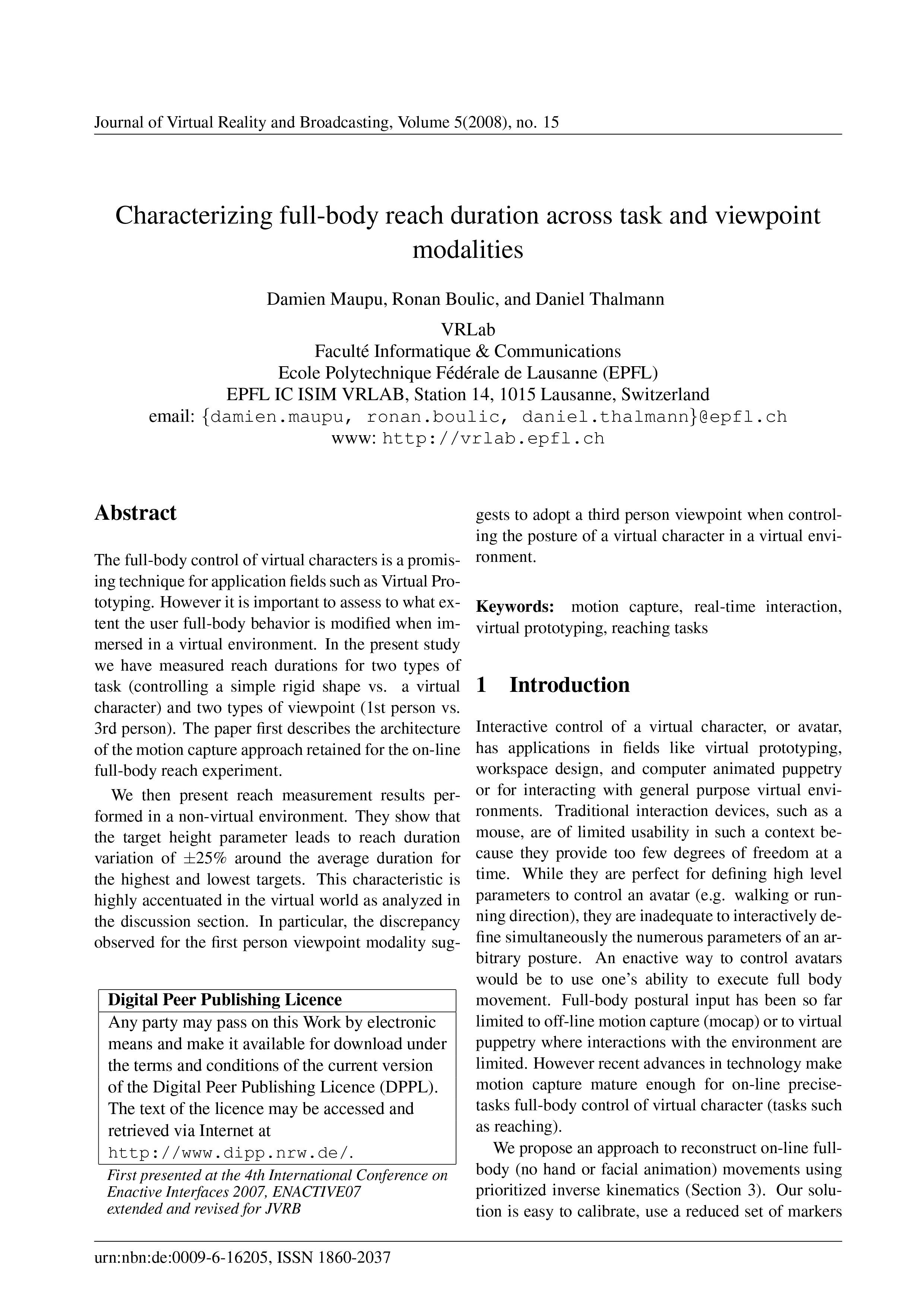Characterizing full-body reach duration across task and viewpoint modalities
DOI:
https://doi.org/10.20385/1860-2037/5.2008.15Keywords:
motion capture, reaching tasks, real-time interaction, virtual prototypingAbstract
The full-body control of virtual characters is a promising technique for application fields such as Virtual Prototyping. However it is important to assess to what extent the user full-body behavior is modified when immersed in a virtual environment. In the present study we have measured reach durations for two types of task (controlling a simple rigid shape vs. a virtual character) and two types of viewpoint (1st person vs. 3rd person). The paper first describes the architecture of the motion capture approach retained for the on-line full-body reach experiment. We then present reach measurement results performed in a non-virtual environment. They show that the target height parameter leads to reach duration variation of ∓25% around the average duration for the highest and lowest targets. This characteristic is highly accentuated in the virtual world as analyzed in the discussion section. In particular, the discrepancy observed for the first person viewpoint modality suggests to adopt a third person viewpoint when controling the posture of a virtual character in a virtual environment.
Published
2008-11-27
Issue
Section
Enactive 2007





